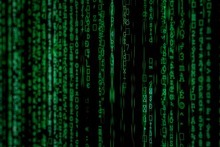In today’s world where we are continually looking for ways to save more time and do things a little bit faster, website scraping often provides a feasible, cheaper and convenient solution to anyone looking to scour the vast expanse of the World Wide Web within the shortest time possible and using the least effort.
Technically speaking, Web scraping is simply collecting, gathering and forwarding information from the internet ( or World Wide Web for those from the famed X – generation )with little or no human interaction at all. It is a practice that can be best described as been birthed from breakthroughs in semantic understanding, text processing, human-computer interactions and with a touch of artificial intelligence.
But even then, the process remains semi-automated, especially given the fact that even the most practical web-scraping mechanisms to date still require limited human effort now and then. This is, however, not to rule out the fact that it is possible to have a system that can convert entire websites to structured pieces of information with a fraction of the time the average computer user/programmer would need.
How It is Done
To understand the essence and fundamental principle behind web-scraping, you might have to polish up your basic computing skills such as the manual copy and paste. You see, instead of re-typing an entire web page, you can opt to utilize the Ctrl+C key presses and later paste the info on an MS-Word worksheet. The only difference between that and conventional web scraping is that in the latter, the manual examination is replaced partially or entirely with machine automation.
Other than that, text processing and advances in web development has given rise to an array of other sophisticated scraping techniques which includes but not limited to; Text grepping, regular expression matching, HTTP Parsers, HTTP Programming, semantic annotation recognition, vertical aggregation and related platforms and lastly but not least, use of webpage analyzers.
Web-scraping Software
You must have heard about web-scraping software, and you’re now probably wondering where they fit in this matrix. Well, such software can be best described as an ensemble of most or all the aforementioned web-scraping techniques. Strictly speaking, Web-scraping software will usually employ the art of automatically detecting and recognizing the data structure of a website and then attempting to provide a recording interface to eliminate the need for manually writing down the contents of the site.
Challenges That Make Web-scraping An Uphill Task
As much as website scraping is a quick and effortless of gathering data without having to inspect pages manually, it is obvious that using bots to navigate both personal and company-owned websites does not augur well with everyone. Hence, most website developers and owners have recently come up with ways of capping this practice. One of the most effective hurdles that beats even the best of web-scaping software is employing a continually changing captcha textbox. The captcha poses a ‘security challenge’ which the bot has to answer before being allowed to navigate the website. As such, it becomes almost entirely impossible to scan the web page without keying in the characters manually.
With this regard, other challenges that most website scraping gurus have to contend with include; proxy servers and automated bot detectors or very strict website TOS.
So while it’s absolutely possible to extract data from websites automatically. There are actually many things that need to be considered to build a reliable data extraction tool.





